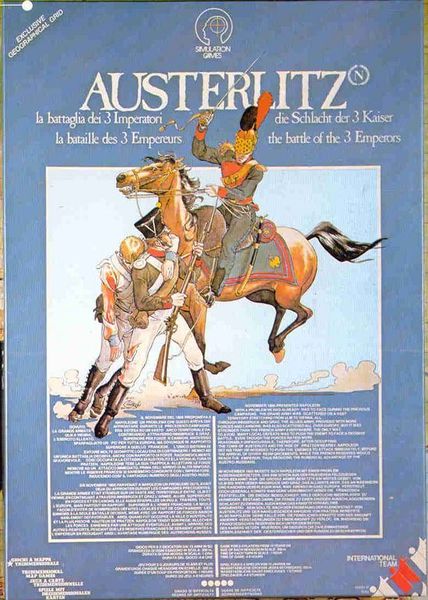Austerlitz: The Battle of the 3 Emperors (1981) Board Game
Austerlitz: The Battle of the 3 Emperors is a board game released in 1981 that simulates the historic Battle of Austerlitz, also known as the Battle of the Three Emperors, which took place in 1805 during the Napoleonic Wars. The game is designed by Enea Riboldi and features a Napoleonic theme with a focus on strategic warfare.
Game Components of Austerlitz: The Battle of the 3 Emperors
How To Setup Austerlitz: The Battle of the 3 Emperors
Setting up the game involves placing the starting units on the map according to the printed locations on the game map. This design helps reduce setup time and ensures historical accuracy. The game board includes all necessary tracks and displays for victory points, demoralization, and reinforcements, making the setup process streamlined.
Gameplay Mechanics and Game Objective
Player Experience
**Austerlitz: The Battle of the 3 Emperors** offers a grand tactical simulation that is both intuitively logical and easy to learn. The game challenges players to maximize their force’s advantages while minimizing those of the enemy. The French Grande Armée is more flexible and nimble, while the Russo-Austrian Army is powerful but slow. Players must navigate the historical terrain and unit dispositions, making strategic decisions to outmaneuver their opponent.
Pros
Cons
Personal Thoughts on Austerlitz: The Battle of the 3 Emperors
**Austerlitz: The Battle of the 3 Emperors** is ideal for those interested in historical wargames and Napoleonic Wars. It offers a deep yet accessible simulation, making it a great choice for both seasoned wargamers and newcomers looking to dive into the genre. The game’s focus on strategy and historical accuracy ensures a rewarding experience, even if the map quality is somewhat dated. This game is perfect for anyone who enjoys the tactical nuances of brigade-level combat and the challenge of recreating one of history’s most significant battles.
We are supported by our audience. When you purchase through links on our site, we may earn an affiliate commission, at no extra cost for you. Learn more.

